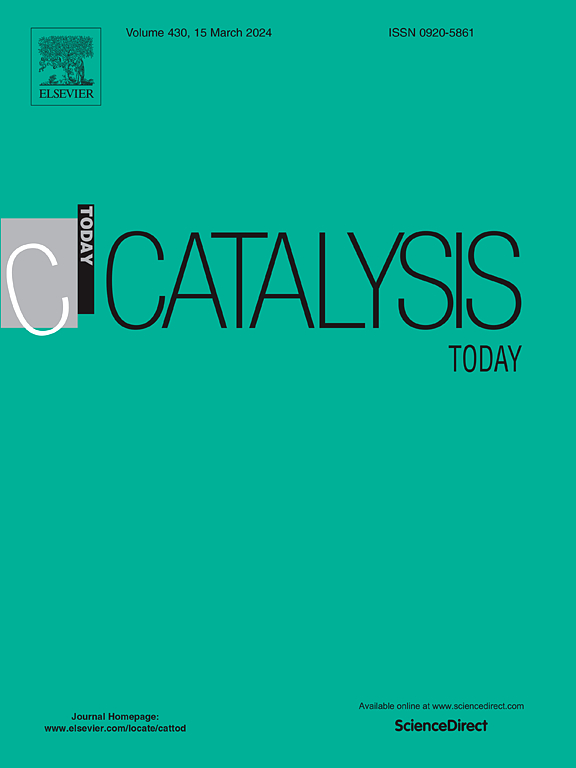Photoelectrochemical generation of H2O2 using hematite (α-Fe2O3) and gas diffusion electrode (GDE)
IF 5.2
2区 化学
Q1 CHEMISTRY, APPLIED
引用次数: 0
Abstract
In contrast to the industrial-scale production of H2O2, electrochemical or photoelectrochemical synthesis is an environmentally friendly alternative. In this study, the photoelectrochemical generation of H2O2 was investigated using a hematite (α-Fe2O3/FTO/glass) photoanode in combination with a gas diffusion electrode (GDE) modified by the incorporation of tin(II) phthalocyanine (SnPc) in its hydrophilic layer. The experiments were conducted in a photoelectrochemical cell with two compartments separated by a proton exchange membrane, under an applied bias and AM1.5 irradiation (100 mW/cm2). The amount of H2O2 generated was quantified through chemical analysis using visible light spectrophotometry of the electrolyte. To assess the process efficiency, the Faradaic efficiency (FE) was calculated. The optimal configuration employed air as the inlet gas for the GDE and phosphate buffer (pH 6.4) as the electrolyte in the cathodic compartment. The combination of the hematite photoanode and the GDE modified with SnPc was the most effective for H2O2 photoelectrochemical generation. The highest FE values achieved were 52.4 % for the GDE (O2 reduction to H2O2) and 0.4 % for the hematite photoanode (H2O oxidation to H2O2).
赤铁矿(α-Fe2O3)与气体扩散电极(GDE)光电化学生成H2O2
与工业规模生产H2O2相比,电化学或光电化学合成是一种环保的替代方法。本研究采用赤铁矿(α-Fe2O3/FTO/玻璃)光阳极与亲水层中掺入锡(II)酞菁(SnPc)修饰的气体扩散电极(GDE)结合,研究了H2O2的光电化学生成。实验在一个由质子交换膜隔开的两个室的光电化学电池中进行,在施加偏压和AM1.5照射(100 mW/cm2)下进行。通过电解液的可见光分光光度法进行化学分析,定量生成H2O2的量。为了评价工艺效率,计算了法拉第效率(FE)。最佳配置采用空气作为GDE的入口气体,磷酸盐缓冲液(pH 6.4)作为阴极室的电解质。赤铁矿光阳极与SnPc修饰的GDE复合制备H2O2效果最好。GDE (O2还原为H2O2)的最高FE值为52.4 %,赤铁矿光阳极(H2O氧化为H2O2)的最高FE值为0.4 %。
本文章由计算机程序翻译,如有差异,请以英文原文为准。
求助全文
约1分钟内获得全文
求助全文
来源期刊

Catalysis Today
化学-工程:化工
CiteScore
11.50
自引率
3.80%
发文量
573
审稿时长
2.9 months
期刊介绍:
Catalysis Today focuses on the rapid publication of original invited papers devoted to currently important topics in catalysis and related subjects. The journal only publishes special issues (Proposing a Catalysis Today Special Issue), each of which is supervised by Guest Editors who recruit individual papers and oversee the peer review process. Catalysis Today offers researchers in the field of catalysis in-depth overviews of topical issues.
Both fundamental and applied aspects of catalysis are covered. Subjects such as catalysis of immobilized organometallic and biocatalytic systems are welcome. Subjects related to catalysis such as experimental techniques, adsorption, process technology, synthesis, in situ characterization, computational, theoretical modeling, imaging and others are included if there is a clear relationship to catalysis.
 求助内容:
求助内容: 应助结果提醒方式:
应助结果提醒方式:


